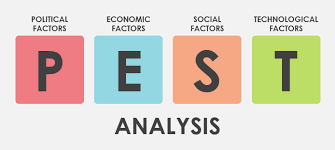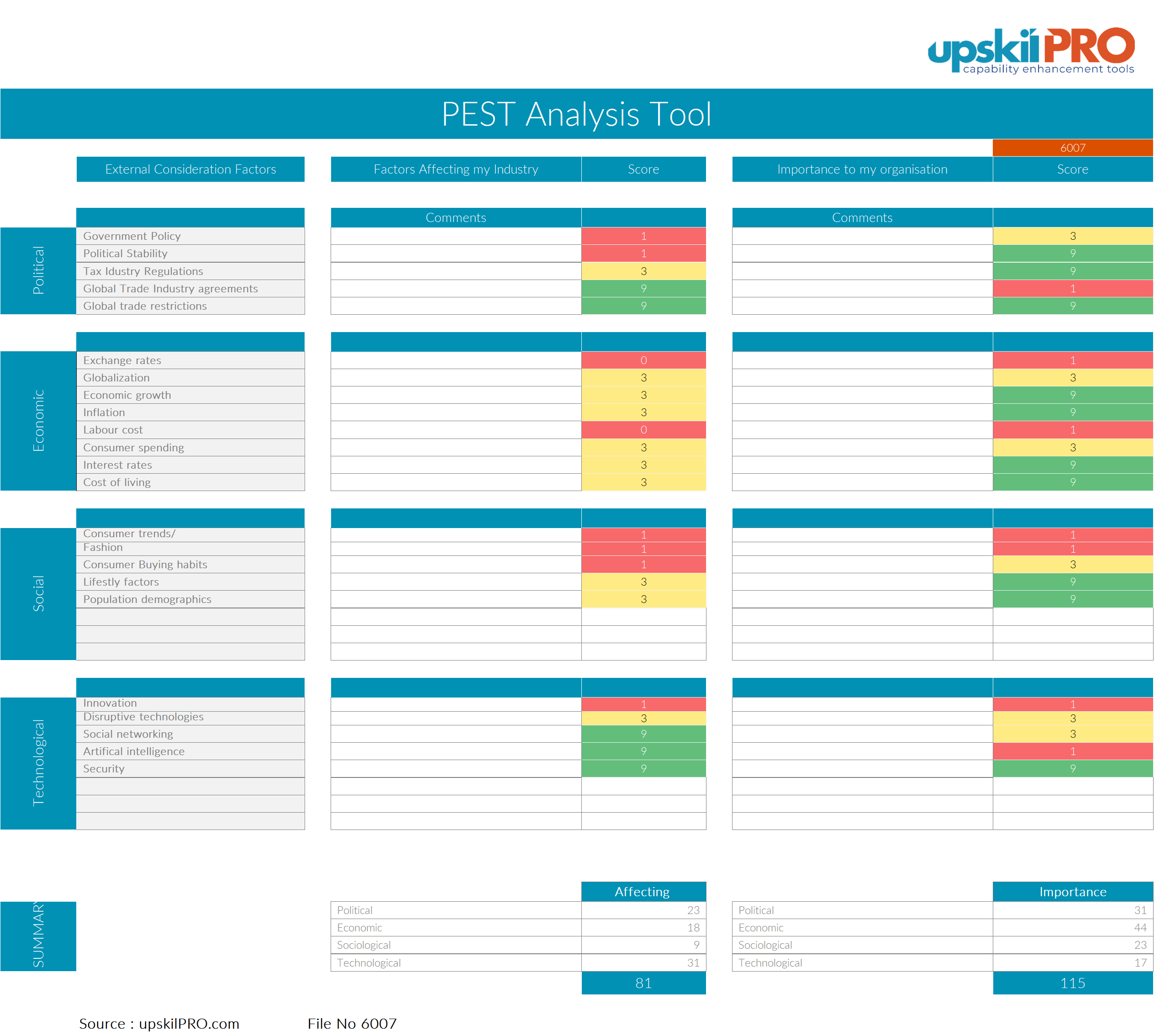
I. Understanding PEST Analysis
A. Overview of PEST Analysis
-
Political Factors: Examining how government policies, regulations, and political stability can influence a business.
-
Economic Factors: Assessing the impact of economic conditions, such as inflation, exchange rates, and economic growth, on an organization.
-
Social Factors: Analyzing societal trends, cultural influences, demographics, and lifestyle changes that may affect the business environment.
-
Technological Factors: Evaluating the impact of technological advancements and innovation on the industry and the organization.

- Strategic Planning: Providing valuable insights for strategic planning and decision-making.
- Risk Management: Identifying potential risks and opportunities in the external environment.
- Business Environment Assessment: Offering a comprehensive assessment of the external factors that can affect the organization.

II. Step-by-Step Guide to Conducting a PEST Analysis
A. Step 1: Identifying Factors in Each Category
- Political Factors: Identify government stability, policies, regulations, and geopolitical factors relevant to the industry.
- Economic Factors: Identify economic indicators like inflation rates, exchange rates, and economic growth affecting the business.
- Social Factors: Identify societal trends, cultural preferences, demographics, and lifestyle changes.
- Technological Factors: Identify technological advancements, innovation, and the rate of technological change in the industry.
Step 2: Assessing Impact and Importance
- Political Factors: Evaluate the impact and importance of each identified political factor.
- Economic Factors: Assess the potential impact of economic factors on costs, demand, and overall business operations.
- Social Factors: Evaluate the influence of societal trends on consumer behavior and market demand.
- Technological Factors: Assess the significance of technological advancements for product development and market competitiveness.
C. Step 3: Analyzing Interconnections
- Identifying Interdependencies: Explore the interconnections between factors in different categories.
- Analyzing Relationships: Assess how changes in one category may trigger effects in another.
- Staying Informed: Continuously scan for emerging trends and changes in each category.
- Monitoring Industry News: Regularly monitor industry news, policy updates, and technological breakthroughs.
III. Real-World Examples of PEST Analysis
A. Political Factors: Brexit and the UK Automotive Industry
- Issue: The UK's decision to exit the European Union (Brexit) has political implications for trade agreements and regulations.
- Impact: Changes in tariffs and trade agreements can affect the cost of importing/exporting automotive components.
- Response: Automotive companies need to reassess supply chain strategies and potential regulatory changes to remain competitive.
- Issue: The COVID-19 pandemic has significantly impacted global economic conditions.
- Impact: Travel restrictions and reduced consumer spending have led to a decline in the tourism industry.
- Response: Tourism businesses must adapt by diversifying revenue streams, implementing cost-cutting measures, and embracing digital solutions.
- Issue: Growing awareness of health and environmental issues is influencing consumer preferences in the food industry.
- Impact: Increased demand for organic, sustainable, and plant-based products.
- Response: Food companies are adapting by introducing healthier and environmentally friendly product lines.
- Issue: Rapid advancements in e-commerce technologies are transforming the retail industry.
- Impact: Shift in consumer behavior towards online shopping, affecting traditional brick-and-mortar retailers.
- Response: Retailers are investing in online platforms, enhancing digital marketing, and optimizing supply chain logistics for e-commerce.
A. Advantages
- Holistic View: Provides a holistic view of the external environment, considering multiple factors simultaneously.
- Early Warning System: Serves as an early warning system for potential risks and opportunities.
- Strategic Planning: Aids in strategic planning by aligning business strategies with external factors.
- Simplification: Criticized for oversimplifying complex external environments.
- Dynamic Nature: External factors are dynamic, and PEST analysis may not capture real-time changes.
- Overemphasis on External Factors: May lead to neglecting internal factors crucial for business success.
PEST analysis, when utilized effectively, serves as a valuable tool for businesses to navigate the intricate landscape of external factors. By systematically examining political, economic, social, and technological dimensions, organizations can gain insights into potential risks and opportunities, enabling informed decision-making and strategic planning.
The step-by-step guide presented here provides a simple yet comprehensive method for conducting a PEST analysis, while real-world examples illustrate its practical application. Acknowledging the advantages and criticisms of PEST analysis, businesses can tailor their approach to leverage its strengths and address its limitations.
In an era of constant change, where external factors can significantly impact business trajectories, the ability to assess and adapt to the evolving environment is a strategic imperative. PEST analysis, as a versatile tool, empowers organizations to proactively respond to challenges and capitalize on emerging trends, ultimately contributing to sustained success in today's dynamic business landscape.
In an era of constant change, where external factors can significantly impact business trajectories, the ability to assess and adapt to the evolving environment is a strategic imperative. PEST analysis, as a versatile tool, empowers organizations to proactively respond to challenges and capitalize on emerging trends, ultimately contributing to sustained success in today's dynamic business landscape.
Established in 2021, upskilPRO is a specialized training and upskilling platform designed to empower Sales and Marketing professionals. We offer a wide range of resources including tools, training, coaching , quizzes, and podcasts. covering sales, trade marketing , key account management, trade marketing,marketing and leadership across B2B and B2C across countries in Asia, the Middle East, and Africa. Share



